HOME
REMIX CULTURE & COLLABORATIVE FILMMAKING


The global remake is a participatory video which allows people from all over the world to take shots/scenes based on the original film ‘the man with a movie camera’ (1929) in order to interpret it. The man with a movie camera is a silent documentary that portrays daily urban life.
The film of 68 minutes has been separated into small sections with screenshots to give people an idea of what to upload. For example at one point during the film, there is a scene of a phone on the table; this automatically shows users what kind of shot to take in order to match up with correctley with the film. The global remake allows people to come together and collaborate to acheive a certain goal (recreation of the traditional film).
Videos are uploaded daily which means previous updated shots will also change; meaning a new version of the film is built. This itself not only recreates a film, but it becomes a worldwide montage.
All work on the site is under the public domain, which makes it free for anyone to use.
Man With a Movie Camera:
This is an example of a short clip representing how the traditional version and uploaded shots work together. This is interesting as it shows how technology and society has changed over time. You can view more about this by clicking
here.
Online collaboration filmmaking is similar to social networking, as many people from various backgrounds come together to form a sharing of new and different ideas to establish a final creation. Not so educational as some might say, you don’t have to have the full profile of skills to show off the techniques of filmmaking. Many people may think of it as an opportunity to become creative and inventive- but this isn’t necessarily true, as performing a new collaboration could be a joyful hobby.
Relating back as to how it may be compared to a social networking site- you're dealing with brainstorming ideas not as an individual but as a whole of group participation, sharing a majority of own aspects creates a close relationship between yourself and other members, within the creativity community, this can link in whether you're a member for a specific website or as a learner developing your own acknowledgement as a fresh start.


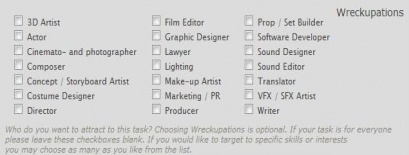
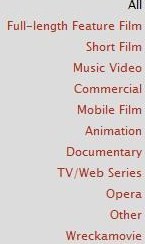



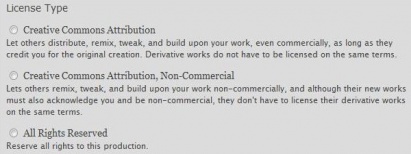






Wreck a movie was produced in Finland by star wreck studios. It is a free online collaborative film production platform, which gives anyone the opportunity to participate. Users can set up their own film productions, or research for existing projects that are taking place. If one finds a project they are interested in, they can collaborate with certain tasks set by the host; although all work you share is being shared freely.
You can use this site to help with the creation of full-length films, short films, music videos to any other video based material. You can also search for actors, makeup artists, graphic designers, sound designers, film editors and many more. This illustrates that online collaborative filmmaking platforms as such, make it easier, save time and money for those producing films and participating. Things have been made easy by giving the user the opportunity to search for something they find interesting, something that suits them which overall makes it easier for everyone.


Examples of online collaborative filmmaking platforms:
The tasks page shows films that need certain tasks done, for example one might need a writer, while another production may need a make-up artist, costume designer and actor. This page makes it easier for those looking to find opportunities to participate within the production of a film. Also at the side of the page is a list of all possible ‘Wreckupations’. Wreckupations basically means Wreck ‘occupation’ – so in other words a list of all the available categorised positions. Examples of Wreckupations are artists, actors, graphic designer, sound designer and many more. This make is easier for producers who want to find a specific category.
On the home page of Wreckamovie, you can see updates of latest tasks, blog posts and latest activity from users. There is also a link leading into featured productions as well as a link that shows you how to create a film using Wreckamovie.
On the productions page, you can choose to see – most active productions, recent productions, most members and completed productions. Each film illustrates the film type, the phrase, the amount of members and when it was launched. To the side of the page you have a list of all the possible types of productions available. A few of these being: commercial, opera, TV/web series, animation and music video. Having this list here makes it easier for the user to find what they are looking for if they are trying to find a specific genre
By clicking the people tab, you are able to see all the users within this website. So far there are 9092 ‘Wreckers’. You can search people by name, location or karma. Karma is basically the amount of devotion one uses – my guess is the more experienced someone is a well as the more someone was to participate would get them a high number of ‘karma’.
You can see the latest activities by going to the ‘activity’ page. Any updates regarding productions, whether it is about any upcoming events, to things such as giving out any tips or about fundraising – etc, are updated for everyone to see.
When creating your own project, you are given the option of choosing what license you want to have; whether you want it to be passed on and used, or not. You also have a list of the different Wreckupations; this is to mark which categories your project applies to.




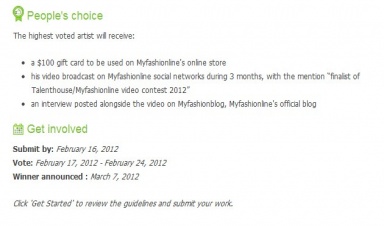
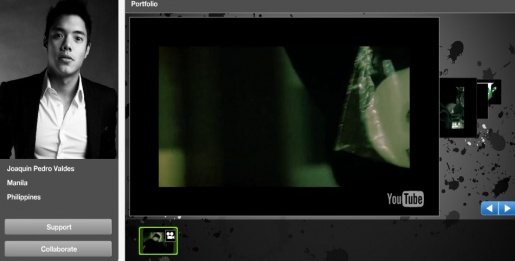
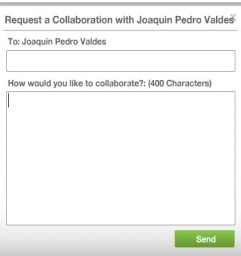

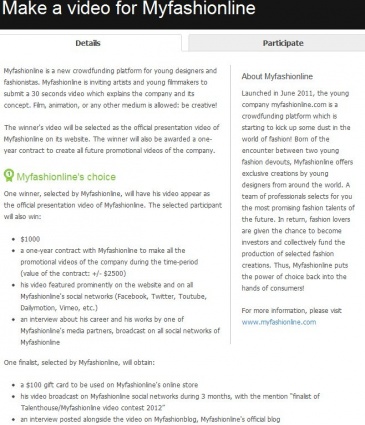






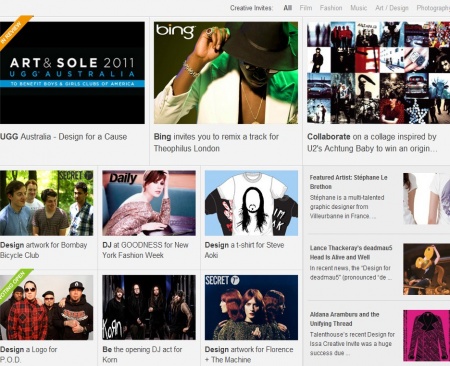
Talenthouse is a free online creative collaboration platform. Not only does it concentrate on film, but it also covers fashion, music, photography, as well as art and design. Talenthouse is aimed at creative and talented people within these sections.
Talenthouse has many partners and well known clients, a few are: UGG, msn, Amazon studios, Nokia, Adidas, Universal Music Group and Red Bull. Many times brands as such post a creative invite (also known as a CI). This is basically an open project that gives users the opportunity to collaborate and take part. Only because a CI is open to everyone, it doesn’t necessarily mean that everyone has to take part; it simply may not stand out to some or be within the region they concentrate on.
There many advantages as to why it can be a good idea to participate - this is mainly because it gives users the opportunity to get their work out there and to get established by others; as well as getting to see work uploaded by other people from around the world.
Creative invites give information about the specific project taking place, set targets and the details on when to submit your work. For each CI, there must be a winner. So you may be asking how the winner gets picked. Votes! The participators of the project can post their work to facebook and other social networks in order to get people to vote for them; although this will result in someone coming 1st, 2nd and 3rd it doesn’t mean that this person will be the winner of the whole project. The winner actual winner will be chosen by the host; but giving the public permission to vote illustrates whose work stands out the most and whose doesn’t.
Another way you can participate without CI is by going onto a user’s profile page, were you can select the ‘collaborate’ button. Once you click collaborate, a text box appears allowing you to write to a brief description as to how you want to collaborate with the user. There is also a comment bar, so if there is any feedback you want to give you can. I find this to be a very interesting creative collaboration platform as it is diverse and shows many unique artists; as well as it being a good experience to have in order to create an online portfolio.

This page shows the many open projects that people can take part in. The bar on top lets you choose what types of projects you want to see, whether it be fashion, music or film – etc. There are a number of pages that one can participate in.
Once you have chosen a creative invite that suits you, you must read both what’s in the ‘detail’ and ‘participate’ box. Majority of the creative invites have prizes for the chosen winner by the host, and the chosen winner by the public. Prize’s vary as each project is different, and is up to the host; not talenthouse. Apart from the prize’s, it is a massive opportunity for so many people to be seen and recognized.
Other than creative invites, you can go onto a user’s page to view their online portfolio, if there be something you like, you can press ‘collaborate’. A text box pops up in order for you to write how you would like to collaborate with the artist’s work you have just seen. The artist will decide if they want accept your proposal or not.
What is collaborative filmmaking?

4,500 hours of footage, over 80,000 videos from 192 countries created into a 90-minute video. This project asked the YouTube community to record and upload videos of a single day in their lives on the 24th July 2010. Life in a day - produced by Ridley Scott, directed by Kevin MacDonald and filmed by YouTube users, is a collaborative documentary shot by filmmakers all over the world.
This documentary is based on a single day on earth in the 21st century and how people lead diverse lives around the globe. I think the way this has been made is very interesting as it allows people to share life experiences, while at the same time be the author of their own movie.
This comes to show how much of an impact web 2.0 holds within society today; and as it is all about communicating and participating with others, this project wouldn’t have been possible to do.
I personally think this is an outstanding collaborative documentation, as I can learn about different cultures, and see the way others live – with some being less fortunate than others. I think it is an eye opener to many people including myself, and would recommend people to watch it. The whole 90 minute documentary can be found for free on YouTube.
Click here for the complete video.
This is also quite similar to 'The Man With a Movie Camera'; as in my opinion both are user generated, showing diverse values of culture.



We were given a task to do for collaborative filmmaking. Each person was to use their mobile phones to record around 10 locations within the university. The clips could be of anything, but to be 20-30 seconds long. Once that was done each person headed back to the classroom where we were put into groups of 3/4. Each member was to share their videos within their group and to then choose a few clips to assemble together using final cut pro. Once the chosen clips have been assembled, we were to experiment with the different affects that could be made within final cut pro. For example we could choose to have one clip blurry while the other clip to be faster than its original speed – this was a small class project to teach us the basics of collaborative filmmaking and final cut pro.
After each group had finished creating their video we were told to move one computer to the left. In other words each group would be now working on a different project. We had been asked to add on different affects to what the previous group had done, and to make it a transformative piece.
Finally when everyone had finished, we gathered around to watch what each group had achieved. We first watched the original video with people explaining what they did, to then watching the same video that had been added onto by another group. This showed how it was transformed and what affects were added. I found this quite interesting as it shows how one can easily change the meaning of something by simply just adding an affect. It shows diverse opinions and illustrates how collaborative filmmaking is about different opinions coming together to achieve something – to transform and assemble.
Final Cut Pro - Class Experiment/Project:
To the side i have posted the original video that was made by my group.
I personally enjoyed this project as i liked collaborating with others to see different views and to see how we can come toghether to create something. I will definetly think about creating more projects as such.
Zainab Itani